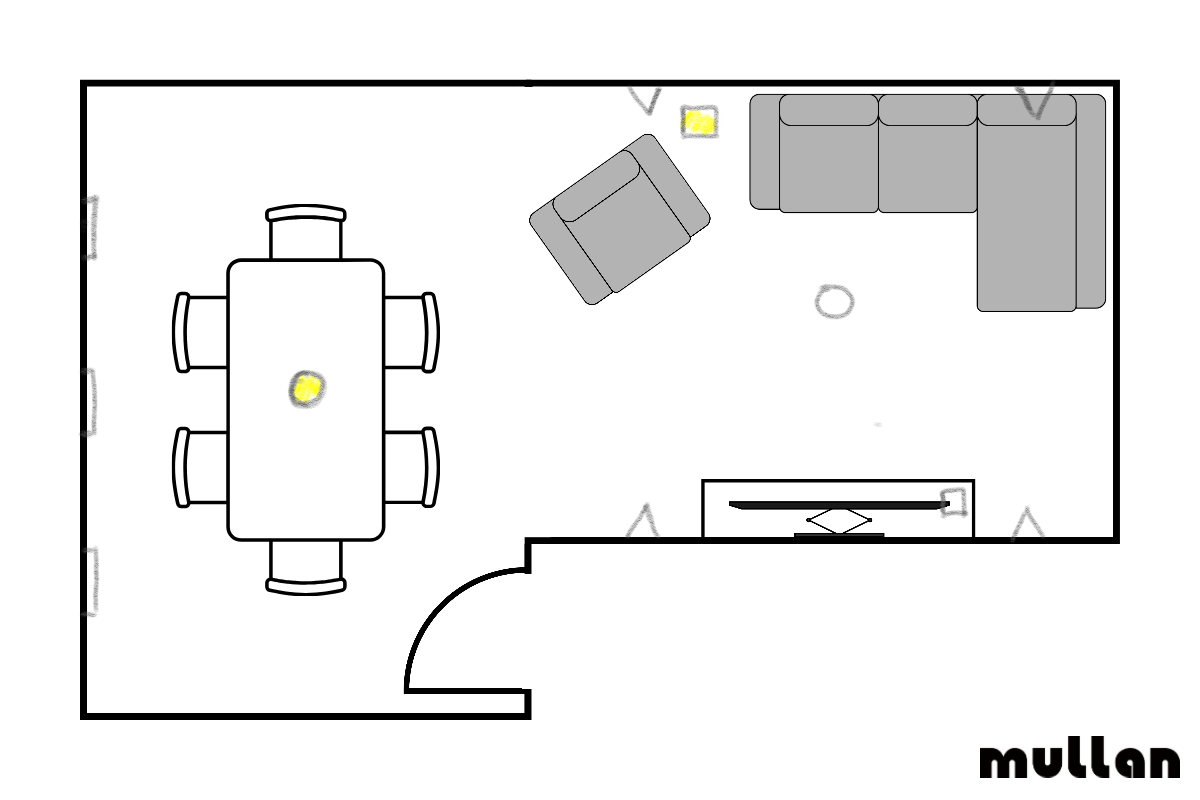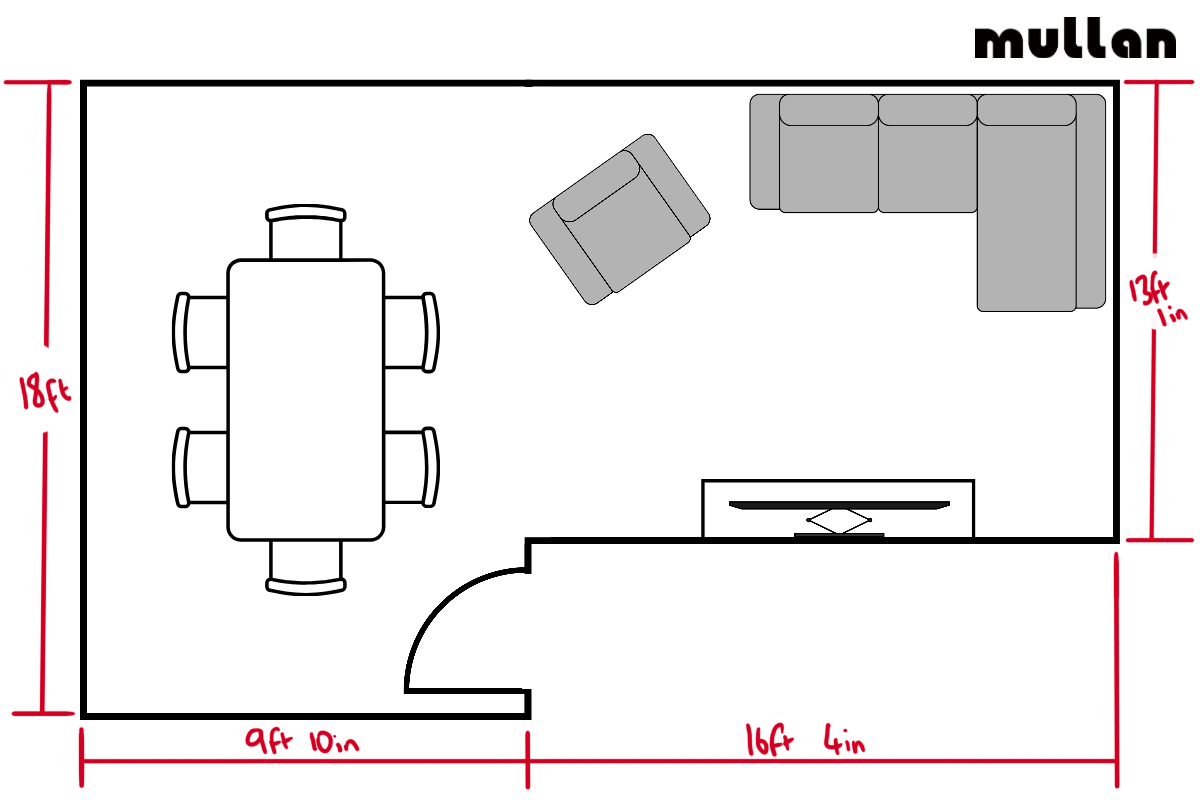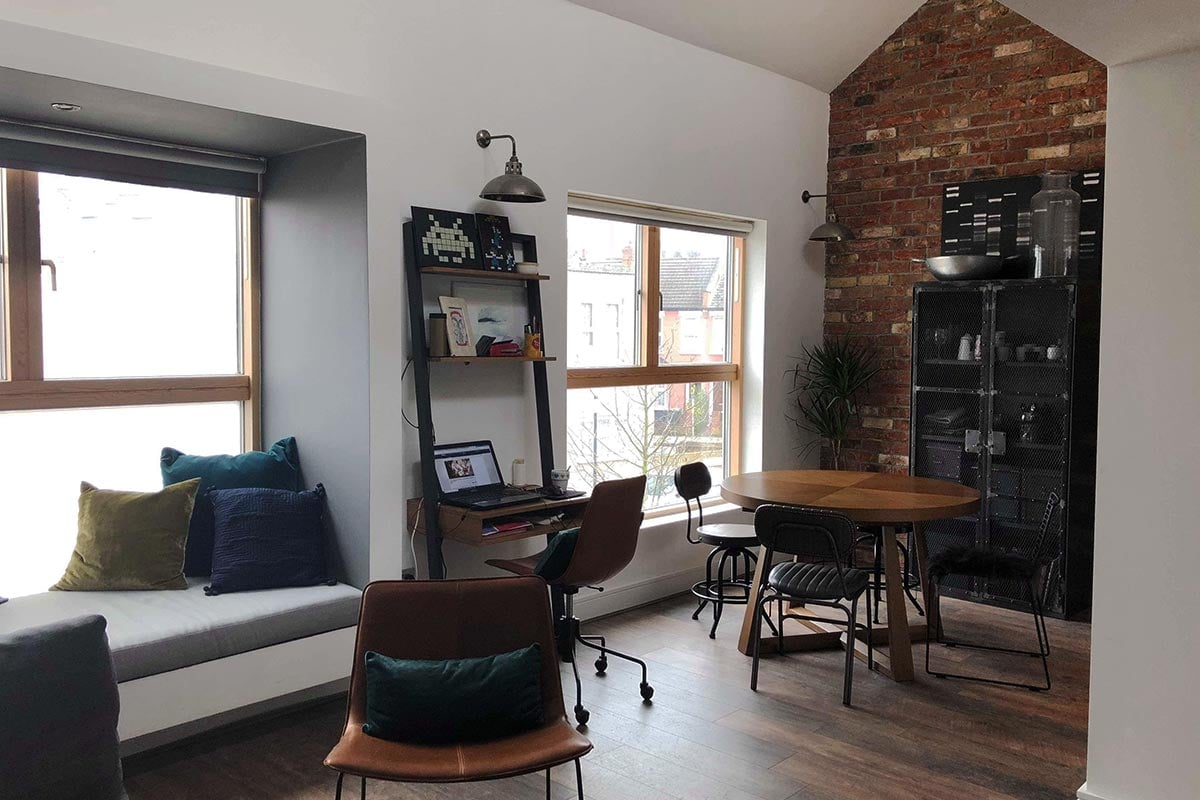
A Guide to Calculating the Amount of Light Needed in a Room
Lighting is one of the most critical aspects of interior design, influencing both the functionality and aesthetics of a space. Whether it's for task lighting, setting the mood, or showcasing architectural features, proper lighting can transform any room. This guide will walk you through the key factors in determining the right amount of light for your space, including how to calculate lumens, optimise light placement, and choose the right colour temperature. We'll also cover tips on energy-efficient lighting and the importance of proper light-shadow balance.

Understanding Lumens, Lux, and Other Measurements
When selecting lighting, it’s important to understand these key terms:
- Lumens (lm): Total amount of light emitted from a source.
- Lux (lx): Light intensity on a surface (lumens per square meter).
- Candela (cd): Light intensity in a specific direction.
- Foot-candles (fc): Older metric measuring light per square foot.
Back in the day of incandescent bulbs, watts (W) used to be a good indicator of brightness but actually measures energy consumption. With modern LED bulbs, lumens are more relevant. For example, a traditional 60W incandescent bulb produces around 800 lumens, while an 800-lumen LED bulb uses only 8-12 watts.
Conversions:
- 1 foot-candle = 10.764 lux
- 1 candela = 12.57 lumens
Lumens are now the most practical measure, as most modern bulbs list this prominently.
Colour Temperature and Its Impact
Colour temperature (measured in Kelvins) affects both the mood and functionality of a space. Briefly:
- Warm Light (2700K-3000K): Relaxing, for living areas.
- Neutral Light (3500K-4100K): Balanced, ideal for workspaces.
- Cool Light (5000K-6500K): Energizing, suited for task-focused areas.
For more detailed guidance on selecting the right colour temperature, you can refer to our comprehensive article here.
Layered Lighting: Creating Depth and Functionality
Layering light involves combining different types of lighting for a balanced, functional space:
- Ambient Lighting: General, overall illumination for a room.
- Task Lighting: Focused light for specific activities like reading or cooking.
- Accent Lighting: Decorative lighting to highlight features, like artwork or architectural details.
For a more in-depth exploration of layering light and tips on how to master this technique, refer to our dedicated article here.
Optimal Lighting Placement

- Effective Locations: Task lights should be placed directly over workspaces like kitchen counters or desks, ensuring focused illumination.
- Common Mistakes: Avoid relying solely on central ceiling lights for tasks, as they are better suited for ambient lighting.
- Utilisation of Shadows: Shadows can be used to add depth and dimension without compromising functionality.
Choosing Effective Locations: Task lighting needs precision. In kitchens, for example, lights should be placed directly above the edge of work surfaces. If cabinets are present, under-cabinet lights are essential for eliminating shadows cast by overhead lights. In workspaces or home offices, place task lights directly above desks to ensure proper lighting.
Central Ceiling Lights as Ambient Lighting: Central ceiling lights are ideal for ambient lighting but ineffective as task lights. By adding a dimmer switch, you can control the intensity of ambient light, which allows greater flexibility to set the mood of a space. Dimmers give you the ability to adapt the light to different times of day or activities, making them a versatile feature in any room.
Avoiding Poor Placement: Lights placed too far from walls or positioned in the middle of the room can leave critical areas under-lit, especially when used for tasks. Ensuring lights are well-positioned over work areas and closer to walls where needed prevents uneven light distribution and dark spots.
Utilising Shadows for Depth: Proper use of shadows can add dimension and texture to a room. For instance, accent lighting directed towards artwork or plants can create soft shadows, adding visual intrigue. In contrast, harsh shadows in task areas, such as reading corners or kitchen worktops, should be avoided. Soft, subtle shadows create a comfortable, layered look that enhances the room’s atmosphere.
How Many Lumens Do You Need?
The amount of light needed depends on the room’s size, shape, purpose, and the occupants' needs:
- Measure the room: For rectangular rooms, multiply the length by the width. For irregular rooms, break them into sections, calculate each area, and add them together.
- Determine the required lux:
- Living room: ~150-300 lux
- Kitchen: ~300-500 lux
- Office: ~400-600 lux
- Calculate total lumens: Multiply the area of each section by the required lux and add the values.

For older adults: People over 65 typically need 50-100% more light. For a room requiring 3,000 lumens, aim for 4,500-6,000 lumens for better visibility.
Are lumens cumulative?
Yes. Two 800-lumen bulbs equal 1,600 lumens.
Additional Considerations
- How do I know if I have enough light for my room?
- Does ceiling height affect lighting needs?
- What if my room has multiple purposes?
Once you’ve calculated your lumens, check the room in use. If you’re reading, cooking, or working and notice shadows or dim spots, you may need more task lighting. Conversely, too much light can feel harsh—installing dimmers can help fine-tune the level based on your needs.
Yes, higher ceilings require more light. Add extra fixtures or use higher-lumen bulbs to ensure the light reaches all areas evenly. Pendant lights or chandeliers can help bring light down from higher ceilings.

In multi-purpose rooms, like a living/dining area, use layered lighting. For example, 150 lux for the living space, 300 lux for dining, with task lights and dimmers allowing you to switch between activities seamlessly.
Examples
- Rectangular room:
A 5 m × 4 m living room (20 m²) needing 150 lux: 20 m² × 150 lux = 3,000 lumens total.
- Irregularly shaped kitchen:
- Section 1: 6 m² × 300 lux = 1,800 lumens
- Section 2: 4 m² × 300 lux = 1,200 lumens Total: 1,800 + 1,200 = 3,000 lumens.
Sustainability Tips for Energy-Efficient Lighting
As a small sidenote, lighting choices don’t just affect your room’s ambiance—they also have an environmental impact. Here’s how to make eco-friendly choices:
- LED Bulbs: Use LED bulbs, which consume up to 80% less energy than traditional incandescent bulbs and last significantly longer.
- Dimmers: Installing dimmers allows you to control light levels and reduce energy use.
- Smart Lighting: Use smart lighting systems that can adjust based on occupancy and natural light.
- Natural Light: Maximise the use of natural daylight to reduce artificial lighting needs.
- Recycling: Ensure proper disposal of old bulbs and choose recyclable fixtures where possible.
Lighting plays a crucial role in creating both functional and inviting spaces. By understanding how to calculate lumens, optimising light placement, choosing the right colour temperature, and making energy-efficient choices, you can dramatically improve the lighting in your home or workspace. Remember to consider the specific needs of your space and its occupants, especially if more light is needed for older adults. Thoughtfully placed lighting not only enhances functionality but also adds depth and atmosphere to any room.
TL;DR
Lighting is key to interior design, influencing both function and aesthetics. Key factors to consider include:
- Lumens and Lux: Lumens measure light output; lux measures light intensity on surfaces.
- Colour Temperature: Choose warm light (2700K-3000K) for relaxation, neutral (3500K-4100K) for balance, and cool (5000K-6500K) for task areas.
- Layered Lighting: Combine ambient, task, and accent lighting for balance.
- Optimal Placement: Position task lights directly over work areas and use ceiling lights for ambient lighting.
- Lumens Calculation: Multiply room area by required lux to determine total lumens. Older adults may need 50-100% more light.
- Sustainability: Opt for LED bulbs, dimmers, and smart lighting to save energy.





